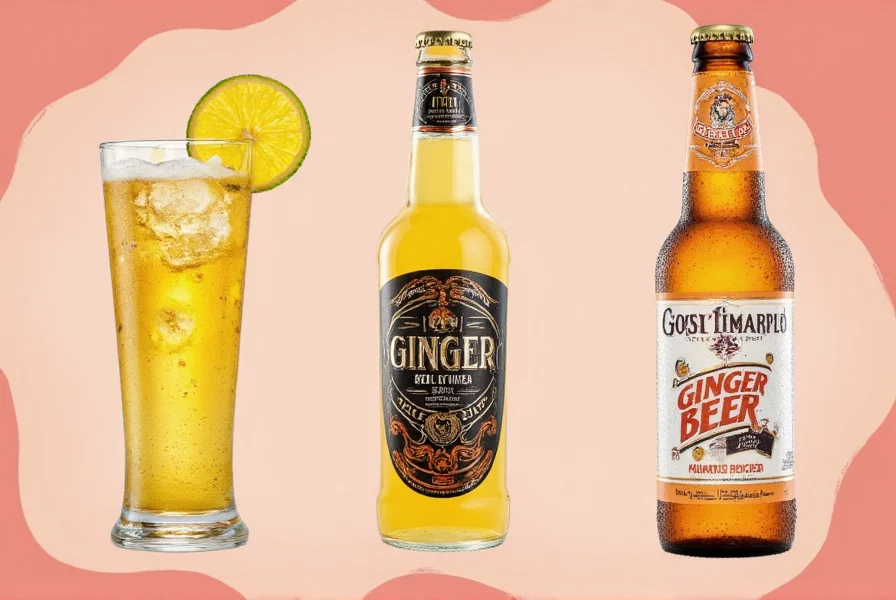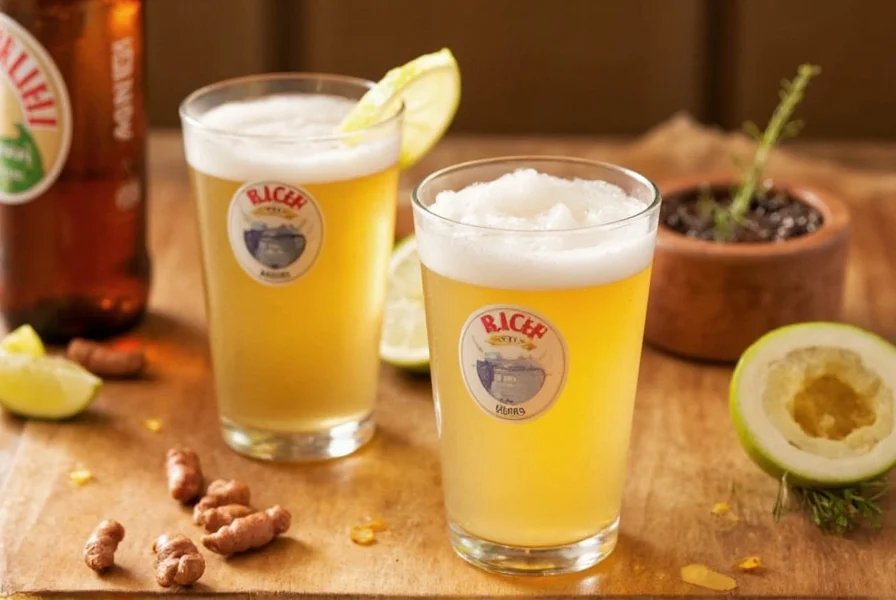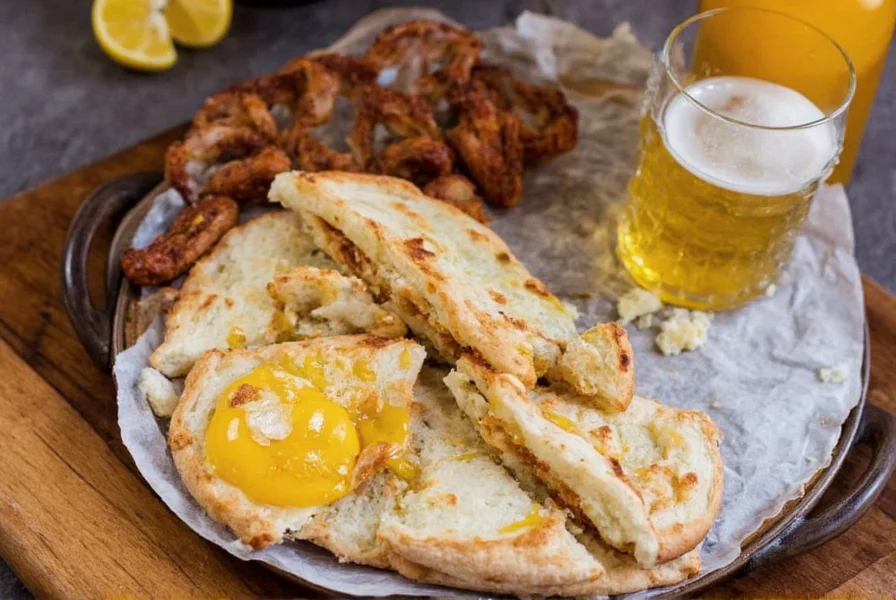Ginger beer's distinctive spicy-sweet flavor profile makes it one of the most versatile mixers in beverage crafting. Unlike ginger ale, which is milder and sweeter, authentic ginger beer contains more pronounced ginger heat and complexity, creating unique pairing opportunities both in cocktails and culinary applications. Understanding what works well with ginger beer requires examining its flavor components and how they interact with complementary ingredients.
The Science Behind Ginger Beer's Flavor Profile
Ginger beer derives its characteristic taste from fermented ginger root, which contains gingerols and shogaols—compounds responsible for its spicy kick. Traditional brewing methods create subtle carbonation and complex flavor notes ranging from citrusy to earthy. The best pairings enhance these qualities without overwhelming them. When selecting mixers or food pairings, consider ginger beer's:
- Medium to high carbonation level
- Spicy ginger heat (varies by brand)
- Sweetness level (typically less sweet than ginger ale)
- Citrus or herbal undertones
- Alcohol content (non-alcoholic in most commercial varieties)

Top Alcoholic Mixers for Ginger Beer
Crafting the perfect ginger beer cocktail requires understanding which spirits complement rather than compete with ginger's distinctive flavor. The following mixers create balanced, sophisticated drinks:
| Mixer | Recommended Ratio | Flavor Profile | Best Serving Method |
|---|---|---|---|
| Bourbon | 2:1 (bourbon:ginger beer) | Warm, caramel notes balance ginger's heat | Over ice with lime wedge |
| Dark Rum | 3:2 (rum:ginger beer) | Molasses richness complements ginger spice | Chilled glass, no ice |
| Vodka | 1:2 (vodka:ginger beer) | Clean neutrality lets ginger shine | With fresh mint and lime |
| Tequila (reposado) | 1:1.5 (tequila:ginger beer) | Agave sweetness balances ginger spice | Rimmed with tajín, with lime |
Non-Alcoholic Ginger Beer Combinations
For those seeking alcohol-free options, ginger beer serves as an excellent base for sophisticated mocktails. The key is incorporating fresh ingredients that enhance rather than mask ginger's natural complexity:
- Lime and Mint Cooler—Combine ginger beer with fresh lime juice and muddled mint leaves for a refreshing beverage that highlights ginger's citrus notes
- Ginger-Turmeric Tonic—Mix with fresh turmeric juice and a touch of honey for an anti-inflammatory powerhouse drink
- Spiced Apple Fizz—Blend with cold-pressed apple juice and a dash of cinnamon for autumnal flavors
- Cucumber-Ginger Refresher—Combine with muddled cucumber and a splash of elderflower syrup for a sophisticated, cooling beverage
Food Pairings That Complement Ginger Beer
Ginger beer's versatility extends beyond beverages to culinary applications. Its spicy-sweet profile cuts through rich flavors while enhancing certain taste elements:
Asian Cuisine—The ginger notes naturally complement Thai, Vietnamese, and Chinese dishes, particularly those featuring coconut milk or fish sauce. Try pairing with Thai green curry or Vietnamese spring rolls.
Grilled Meats—The carbonation and acidity help cut through fatty proteins. Ginger beer works particularly well with grilled pork, especially when the meat has been marinated with soy, garlic, and ginger.
Spicy Dishes—Unlike water, which can spread capsaicin, ginger beer's sweetness and carbonation help neutralize heat from spicy foods while the ginger complements chili flavors.
Desserts—Surprisingly effective with certain sweets, particularly those featuring chocolate or caramel. Try a small pour alongside chocolate mousse or bread pudding.

Seasonal Pairing Recommendations
Adjust your ginger beer pairings according to the season for optimal flavor experiences:
- Spring—Combine with fresh rhubarb syrup and lemon for a bright, tart cocktail that complements asparagus and early spring vegetables
- Summer—Mix with watermelon juice and basil for a refreshing beverage that pairs perfectly with grilled seafood
- Autumn—Blend with apple cider and a cinnamon stick for a warming drink that complements roasted root vegetables
- Winter—Pair with dark spirits like bourbon or dark rum for hearty cocktails that complement rich stews and braises
Common Ginger Beer Pairing Mistakes to Avoid
While ginger beer is versatile, certain combinations create unbalanced flavors:
- Overly sweet mixers—Avoid pairing with pre-sweetened mixers as they can create cloying beverages that mask ginger's complexity
- Competing spicy elements—Be cautious when combining with other strong spices like clove or allspice which can overwhelm ginger's distinctive flavor
- Delicate wines—Ginger beer's assertive flavor typically overwhelms light wines rather than complementing them
- Over-chilling—Excessive cold dulls ginger's aromatic compounds; serve at 45-50°F (7-10°C) to maximize flavor perception
Understanding Quality Differences in Ginger Beer
Not all ginger beers deliver the same pairing potential. Artisanal varieties typically contain more real ginger and less sugar than commercial brands, resulting in more complex flavor profiles ideal for sophisticated pairings. When selecting ginger beer for mixing:
- Check ingredient lists for real ginger root rather than artificial flavors
- Look for fermentation-based products rather than carbonated waters with ginger flavoring
- Consider sugar content—lower sugar varieties work better with sweet mixers
- Test different brands to find those with balanced heat levels for your preferred pairings
Frequently Asked Questions
What's the difference between ginger beer and ginger ale for mixing?
Ginger beer contains more real ginger root, has a spicier, more complex flavor profile, and is typically less sweet than ginger ale. This makes ginger beer better for sophisticated cocktails where you want pronounced ginger flavor, while ginger ale works better when you need a milder, sweet mixer.
Can I use ginger beer in cooking, not just drinks?
Yes, ginger beer works well in cooking. Use it as a braising liquid for pork, in marinades for grilled meats, or as a base for glazes. Its carbonation helps tenderize proteins while the ginger adds complex flavor. Avoid boiling ginger beer directly as high heat diminishes its delicate flavor notes.
What's the best way to store opened ginger beer?
Store opened ginger beer in the refrigerator with a tight-sealing cap. Consume within 3-5 days for optimal flavor and carbonation. Avoid storing in the door of the refrigerator where temperature fluctuations occur. For longer storage, freeze in ice cube trays and use the cubes in future cocktails.
Why does my ginger beer cocktail taste flat sometimes?
Ginger beer loses carbonation when mixed with other ingredients, especially if stirred vigorously. To maintain fizz, pour ginger beer last over the back of a spoon, avoid excessive stirring, and serve immediately. Using very cold ingredients helps preserve carbonation longer than room-temperature mixers.
What non-alcoholic spirit works best with ginger beer?
High-quality non-alcoholic spirits based on botanicals work best with ginger beer. Look for options featuring juniper, citrus peel, or spice notes that complement rather than compete with ginger's flavor. Non-alcoholic rums or gins typically create the most balanced pairings, while avoiding overly sweet NA spirits that can create cloying combinations.











 浙公网安备
33010002000092号
浙公网安备
33010002000092号 浙B2-20120091-4
浙B2-20120091-4